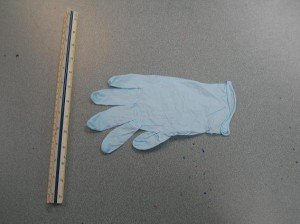Broken legs, unlike broken arms and wrists can result in mild to severe, life-threatening situations. In order to treat a broken leg, you must be able to recognize it and be able to have an idea of how to treat a specific injury related to the leg. In case of a leg injury above the knee, call 911 immediately. The details posted on this page are for information purposes only, learn to effectively help and manage injuries involving broken bones by taking first aid training programs.
Symptoms
- Severe pain
- Swelling
- Deformity
- Bruising
- Tingling sensation or numbness in the affected area
- Inability to move the affected region or whole leg
Treatment
- Always consider safety first. You do not want to rush into the scene of the accident in the middle of a busy road. Make sure it is safe for you to approach the casualty. Wear safety gear; goggles, masks and gloves if necessary.
- Next consider the ABCs of first aid: Awake? Breathing? Continuous Care.
Ensure that you use protective equipment, such as gloves, when helping victims. - Stop bleeding by applying pressure on the wound with a sterile bandage or clean cloth.
- Check the casualty for any injuries. If the casualty is injured in the neck, back or head region, do NOT move him and seek medical help immediately.
- Rinse any wounds that have been contaminated with dirt or debris with clean water or saline solution.
- Cover the wounds with sterile dressing.
- You may have to splint the injured leg if help is taking too long to arrive. Immobilize the joints of the affected leg: hip, knee, ankle, both above and below the injured region. Make sure movement is prevented but do not secure the leg too tightly as it may prevent circulation.
- If there is any swelling, use ice packs or ice wrapped in clean towels on the affected area. Leave the ice pack for 15 minutes.
- If practical, elevate the injured leg above the level of the heart.
- Allow the casualty to lie down and cover him with a blanket.
- If the casualty is unconscious, check for signs of circulation. If the casualty is not breathing or showing any signs of circulation, begin CPR promptly.
Caution
- If you suspect a back, neck or head injury, do not move the victim unless it is highly necessary–to save him from further injuries, for example.
- Do not move the causal’s neck, unless necessary for safety reasons.
- Do not try to extend the casualty’s injured leg—unless it is blue, cold, paralyzed or numb.
- If the leg is deformed, try to return it to normal position, only if possible.
- If the hip or pelvis are broken, the injury is above the knee or if the neck, head or back is injured, call 911 immediately.
- You can use a long wooden spoon, a broom handle, a tube from a vacuum or anything similar to splint the affected leg.
Additional Training Information Via Video
http://www.youtube.com/watch?v=NoPgd1XXkSo

